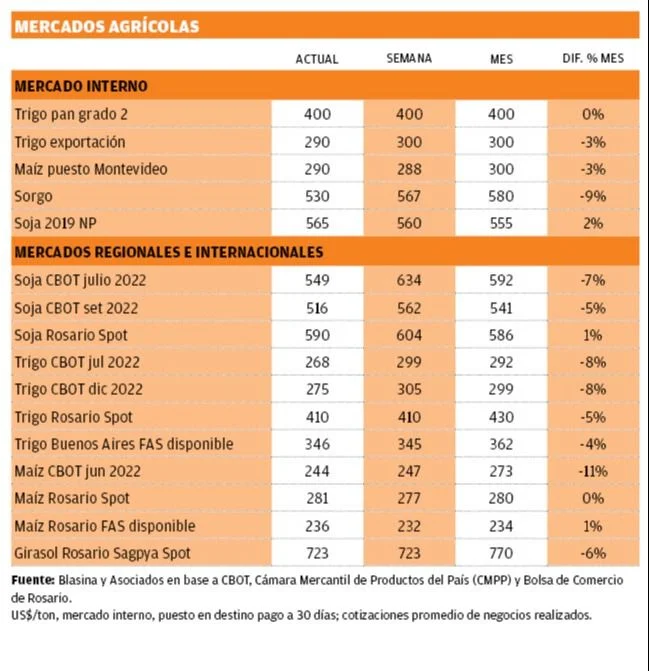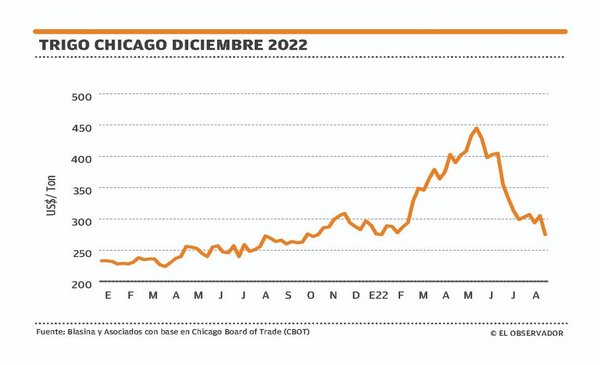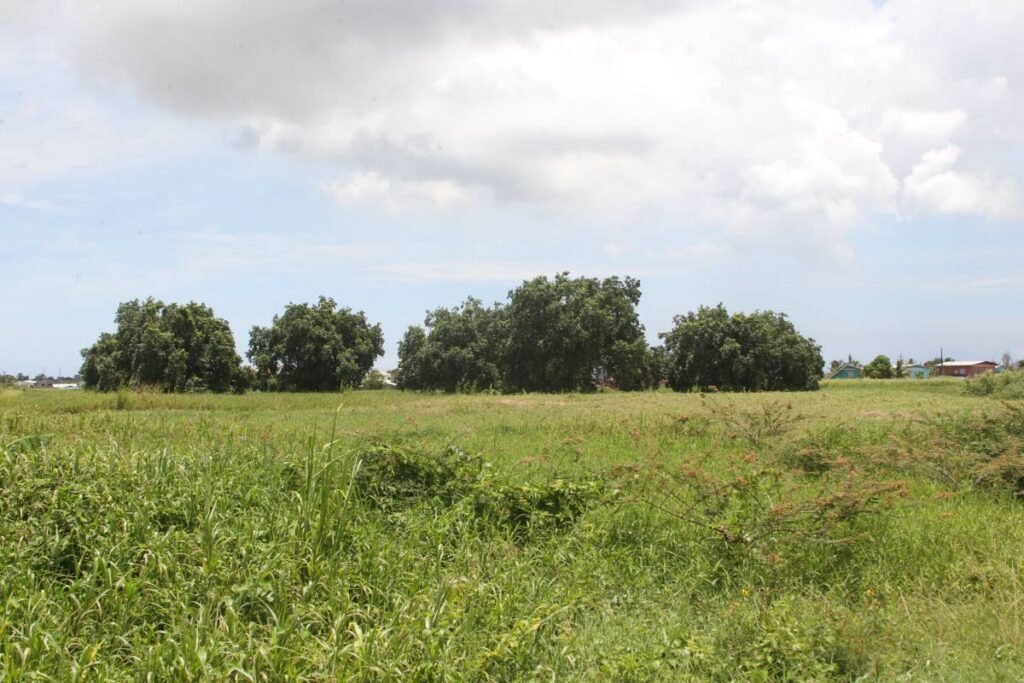Since last Friday, when the monthly report of the United States Department of Agriculture (USDA) projected a higher-than-expected production of soybeans for the next harvest, and as grain shipments from Ukraine increase, the grain market resumed a downward trend that has prevailed in the last two months.
It was only partially halted last week, as a heat wave threatened US crops..
The weather front doesn’t help either. Rains have arrived in the US agricultural areas, which already seem to be ensuring an at least acceptable harvest which, together with the rest of the context, leads the price references to follow a correction that is accompanied by all the raw materials, oil included.
O. Gimanov – AFP
Loading and dispatch of Ukrainian grains has been streamlined.
They go down, but not that much
Within a logic that is still high prices compared to last year, prices have gradually returned to those prior to the war and in the case of soybeans they predict a price lower than that of last fall’s harvest, but higher than that of previous harvests.
Soybeans and corn showed some recovery against the sharp drop in prices on Tuesday 16, but they still remain below the previous week’s close: a ton of soybeans for November on the axis of US$515 and corn just above US$240 a ton.
Wheat fell up to 10%, leaving the line of US$300 a ton to fluctuate between US$270 and US$275.

EO
The local climate match
While, Crops in Uruguay are threatened for the first time by lack of water at the gates of spring.
In the west there are areas with water deficit and there are no rains for the next few days and there is a rise in temperature as of August 23 that may result in a demand for crops.
Sanitary problems and frosts have also caused some damage to rapeseed crops. This within a scenario that remains generally favorable.
In Argentina, the Rosario Cereal Exchange increased its estimate of the volume of the 21/22 corn harvest by three million tons (from 49 to 52 million), based on an increase of 400,000 hectares in the planted area.
For 2022/23, a planting intention of 7.5 million hectares is projected, a drop of 2.3%.
The risk of a dry spring due to the effect of La Niña – for the third consecutive season – opens the prospects for practicing “precision agronomy”, with adjustments to sowing dates, rotations and later sowings so as not to expose the crops to the periods deficit in rainfall at critical moments of each cycle.







